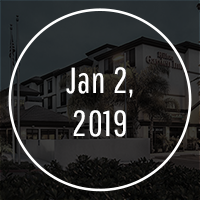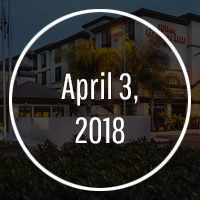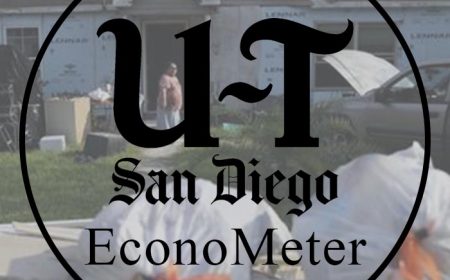To Q3 and Beyond: Hotel Industry Forecast for San Diego, Arizona, Colorado, and other U.S. Markets
U.S. Economy
Companies are reporting solid revenues as well as profits. Q2 Gross Domestic Product (GDP) was at 4.2 percent, the best quarter in five years. Business and consumer confidence and spending are strong and future growth for 2019 looks good. Interest rates and inflation have increased modestly, in sync with movements in the economy. Having said that, my favorite index is the Institute for Supply Management’s Purchasing Management Index.
That index fell to 58.1 in July, 2018 from 60.2 in June, below market expectations of 59.5. The reading pointed to the weakest expansion in the manufacturing sector in three months amid a slowdown in new orders, export orders and production. Demand remains robust but manufacturers keep showing concerns about how tariff-related activity, including reciprocal tariffs, will continue to affect their business.
At this point in the cycle, there are headwinds including trade disputes, politics, higher interest rates and inflation, Iran, North Korea, debt levels, immigration and Congressional elections in November. Naturally, a Black Swan event would potentially be an economy killer. But there are tailwinds that are strong as well. These include the economy, low unemployment, higher wages, relatively low interest rates and overall inflation, potentially successful trade negotiations, global growth and strong consumer confidence.
The bottom line is that there is a green light going forward for the foreseeable future, despite this long cycle. Driven by a solid overall economic base that includes solid GDP growth, wage increases and low unemployment, almost all data is positive, however, rising interest rates are causing increased debt payments for borrowers and the maturing business cycle will eventually lead to slowing growth.
U.S. Lodging Industry
U.S. hotels grew revenue per available room (RevPar) at a 3.3 percent clip for the trailing 12-month period of August 2017-July 2018. This is up from most expectations as Q2 2018 really saw some momentum shifting. Occupancy levels are at a historic high and average daily rate (ADR) represents most of RevPAR growth. We see no reason that the economy cannot stay strong and thrive through 2018 and 2019. ADR growth is expected to increase 2.5 percent next year, albeit not enough to keep pace with the cost of labor.
New supply is not likely to stop the continuation of positive RevPAR growth. Banks will put the brakes on lending, however, those who are experienced and have the full development package of equity, leading brand or unique ideas and a strong market will be able to develop. Increased supply and construction costs are two reasons development is difficult today. A Black Swan event or a global meltdown are not likely to occur but would certainly stop this positive growth. Only time will tell but 2018 and 2019 look solid.
The major forecasting firms, CBRE, PwC and STR are projecting that the U.S. lodging industry will achieve an annual occupancy rate of around 66 percent in both 2018 and 2019, flat as supply and demand are running at about 2 percent annual growth. Average rate growth should finish at between 2.5-3 percent, according to the pundits, in line with projected GDP growth.
The big challenge might be to reverse some of the trends that hoteliers have been battling relative to high costs of health care, wages driven by shrinking labor pools and brand required PIPs. Further, CBRE has issued a report on reduced labor productivity and HotStats has indicated GOP has peaked. The combination of the rising costs and increased cost of distribution can severely impact bottom line performance.
Q3 RevPar outlooks call for some deceleration from Q2 based on the combination of July 4 falling midweek, impacting leisure travel and the Jewish holidays falling mid-week in September, impacting corporate travel. According to Cleveland Research, 2018 industry forecasts are slightly higher on demand while supply remains in check; 2019 looks like a step down, according to the firm.
Following better than expected year-to-date trends, STR raised their full year outlook to 3.2 percent RevPar growth, up from their prior forecast of 2.9 percent. The cycle now is at over 100 consecutive months of RevPAR growth vs. 56 months in the prior cycle and 111 months in the cycle of the 1990s. Hotel demand has continued to rise, albeit modestly, and the industry as a whole has been able to maintain a level of pricing power.
Meanwhile, as the prognosticators look further out into 2019 the expectations are for much of the same with perhaps a slight trail off. For example, STR is calling for a 2.6 percent RevPAR increase and a 0.2 percent increase in occupancy to 66.4 percent, while ADR is expected to grow by 2.4 percent to $132.97.
Specific Markets We Follow
Phoenix
Look for continued job growth as Arizona continues to have a stable and predictable business climate, workforce depth, quality of life and strong education programs. The gubernatorial election could be divisive but Governor Ducey has a strong command of the business climate and normally, the economy rules in these elections. The entire Arizona economy is very strong and we remain bullish on this entire market and remain invested.
With minimal new supply growth, (Tempe is an exception but new corporate growth in that submarket has kept pace with new supply) the Metro Phoenix market will have a very strong Q3 and Q4 2018 and 2019. Year to date RevPar is up 4.2 percent through July, 2018. Average rate growth should continue at 3 percent with flat occupancy levels. We expect occupancy, average rate and revenue per available room to finish 2018 near 70 percent, over $130 and $91 respectively with modest growth in 2019.
Tucson
The Tucson market has led the state of Arizona in every growth area; ADR, occupancy and RevPar. Double-digit RevPar growth is highly unusual today but Tucson is almost there. Trailing 12-month occupancy and rate are 65 percent and $110, up 9.5 percent in RevPar. About half of the increase is in rate, half in occupancy.
The market is strongest around the University of Arizona, in extended-stay hotels, in transient corporate and leisure and in the group market. This positive balance leads to 5-6 percent RevPar forecasted by STR for 2019. While north and south Tucson offer different ADR levels, (north is much higher) the entire market is growing. We are invested in this market as well.
Colorado Springs
This market was soft after many companies left back in the early 2000s but has seen a resurgence based on proximity to booming Denver, legalization of marijuana in the state (still illegal in Colorado Springs) and phenomenal natural attractions like Pikes Peak and Garden of the Gods, the Air Force Academy, Olympic Training Center and much more.
Occupancy levels are beginning to approach 70 percent and rates should exceed $125 this year. This is after years of languishing in the 50-60 percent range throughout much of the last decade. Year to date, RevPar is up 6.3 percent through July, 2018. We expect steady occupancy in the 68 percent range and growth in average rates as new supply is just a few hotels in a market with over 11,000 hotel rooms. We remain bullish on this exciting leisure-oriented market and while we sold an investment here, we are looking at additional opportunities.
San Diego
San Diego should see continued strength from all market segments. Convention Center groups are down but leisure is up and corporate is stable. Supply is increasing in downtown but demand should absorb most of it. 2017 finished at over 77 percent occupancy and $160 average rate for a RevPar of almost $125. Year to date revPar is up 3.5 percent through July, 2018. We expect to see ADR at $165, up 3 percent from 2017 this year and similar growth in 2019 with ADR approaching $170 with steady occupancy levels of 77-78 percent.
This is our home market and we will provide a complete review of this market as always shortly.
Summary and Quick Facts
Despite the record occupancy levels, average daily rate (ADR) growth continues to challenge hoteliers. Factors such as increased supply, low inflation, the sharing economy and rate transparency make it more difficult to raise rates. Other challenges include the lack of buying opportunities available as sellers are not motivated to sell. According to JLL, the top 5 cities that investors are interested in investing in over the next two years are Washington, D.C., Boston, Tampa, Los Angeles and Portland.
Economic factors that may dampen the industry confidence and the perceived positive impacts of the Tax Cuts and Jobs Act are trade tensions with China and rising cost of labor for entry-level jobs. According to STR data as of June 2018, year-to-date total U.S. supply growth capped at 1.9 percent. There are several markets where supply growth is high – New York, Orlando, Dallas, Nashville and Denver have seen significant growth in new supply.
Global business travel spending reached over $1.3 trillion in 2017, up more than 5 percent over 2016 levels, according to the Annual Global Report & Forecast, released by the Global Business Travel Association (GBTA) last month at their San Diego Convention. Spending is forecast to advance another 7.1 percent in 2018 and will expand to $1.7 trillion by 2022.
This economy remains intact. Stay focused and as we transition to another economy, it is more likely that this transition will be one of a soft landing and not a meltdown. To a great finish to 2018 and a Happy and Healthy New Year to those who celebrate the Jewish New Year next week! See you all at the Lodging Conference!







